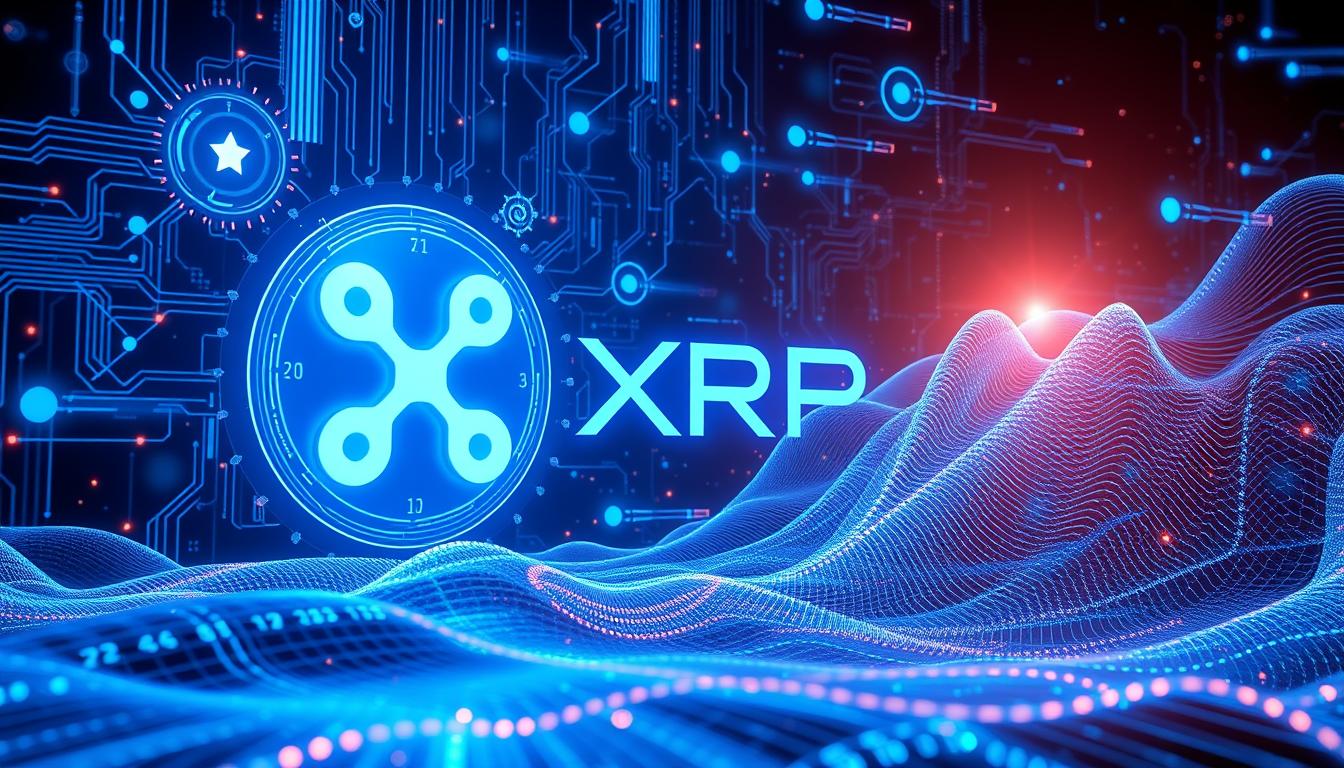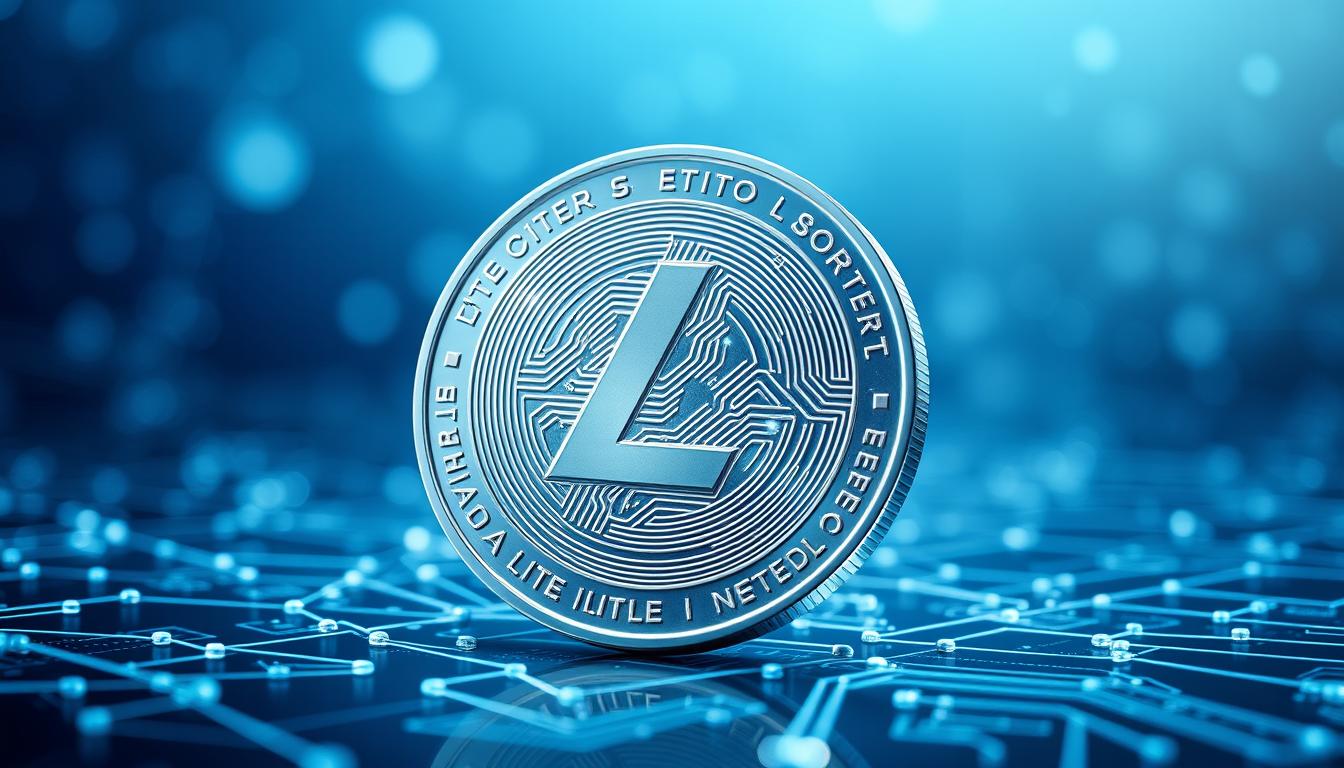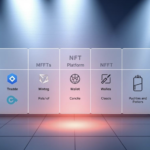Now Reading: XRP (Ripple): Understanding the Digital Asset
- 01
XRP (Ripple): Understanding the Digital Asset
XRP (Ripple): Understanding the Digital Asset

In the ever-evolving landscape of the global financial system, a digital asset known as XRP, developed by Ripple, has emerged as a game-changing force. XRP, also referred to as Ripple, has gained significant attention for its ability to revolutionize cross-border payments and transform the way we think about remittance solutions. This article delves into the intricacies of XRP, exploring its underlying technology, its role within the cryptocurrency ecosystem, and its profound impact on the financial services industry.
As a cryptocurrency, XRP stands apart from its counterparts, offering unique features and functionalities that have captivated the interest of financial institutions, businesses, and individuals alike. By harnessing the power of blockchain technology and distributed ledger systems, XRP aims to address the challenges inherent in traditional cross-border payment methods, providing a more efficient, cost-effective, and seamless solution for global value exchange.
At the heart of XRP’s success lies its ability to enable fast, secure, and low-cost transactions, making it an attractive option for individuals, businesses, and financial institutions seeking to streamline their cross-border payment processes. By leveraging the Interledger Protocol and the RippleNet ecosystem, XRP has positioned itself as a trailblazer in the FinTech revolution, transforming the way we think about global finance and remittance solutions.
Key Takeaways
- XRP, also known as Ripple, is a digital asset that has revolutionized cross-border payments and global finance.
- XRP leverages blockchain technology and distributed ledger systems to address the challenges of traditional cross-border payment methods.
- XRP’s ability to facilitate fast, secure, and low-cost transactions has made it an attractive option for individuals, businesses, and financial institutions.
- The Interledger Protocol and the RippleNet ecosystem are key components that enable XRP’s seamless value exchange and FinTech innovation.
- XRP’s impact on the financial services industry has been significant, as it continues to transform the way we think about global remittance solutions.
Introduction to XRP (Ripple)
XRP, also known as Ripple, is a unique digital asset that serves as the native currency within the Ripple network. This blockchain-based platform is revolutionizing the world of cross-border payments, offering a fast, secure, and cost-effective solution to the challenges faced by traditional banking systems.
What is XRP (Ripple)?
XRP is a cryptocurrency that operates on the Ripple network, a distributed ledger technology that facilitates the exchange of value across various currencies and asset types. Unlike Bitcoin, which uses a proof-of-work consensus mechanism, XRP relies on a consensus protocol that allows for faster transaction times and lower energy consumption.
The Ripple Network and Its Objectives
- The Ripple network is designed to streamline the process of international money transfers, addressing the inefficiencies and high costs associated with traditional banking systems.
- By leveraging blockchain technology and distributed ledger capabilities, Ripple aims to enable seamless, real-time remittance solutions for individuals and businesses alike.
- The network’s primary objective is to facilitate the exchange of value across different currencies, asset types, and financial institutions, ultimately fostering a more inclusive and efficient global financial ecosystem.
| Key Features of the Ripple Network | Benefits |
|---|---|
| Decentralized Cryptocurrency (XRP) | Faster, cheaper, and more secure cross-border payments |
| Blockchain Technology and Distributed Ledger | Increased transparency and reduced settlement times |
| Interoperability with Existing Financial Systems | Seamless integration and improved liquidity |
“Ripple is a real-time gross settlement system, currency exchange, and remittance network that is powered by its own cryptocurrency called XRP. It is one of the leading blockchain-based solutions for cross-border payments, enabling faster, more secure, and cost-effective international transactions.”
XRP (Ripple) and Cryptocurrency
The XRP Ledger (XRPL) is a decentralized public blockchain that serves as the foundation for the XRP cryptocurrency. Unlike Bitcoin or Ethereum, XRP operates on its own unique blockchain network, offering distinct properties and capabilities that make it a valuable digital asset for financial institutions and individuals involved in cross-border transactions.
As a cryptocurrency, XRP is designed to facilitate fast, secure, and cost-effective value transfers across borders. Compared to traditional payment systems, the XRP Ledger can process transactions in seconds with negligible fees, making it an attractive option for global payments and remittances.
One of the key features of XRP is its scalability. The XRP Ledger is capable of handling thousands of transactions per second, a performance that surpasses many conventional payment networks. This high-performance capability, coupled with low transaction costs, positions XRP as a viable solution for financial institutions and applications that require rapid and efficient cross-border payments.
| Feature | XRP (Ripple) | Bitcoin | Ethereum |
|---|---|---|---|
| Transaction Speed | 3-5 seconds | 10 minutes | 15 seconds |
| Transaction Cost | Fractions of a penny | Variable, can be high | Variable, can be high |
| Scalability | Thousands of transactions per second | Approximately 7 transactions per second | Approximately 15 transactions per second |
The XRP Ledger is a unique blockchain technology that sets it apart from other popular cryptocurrencies. Its focus on streamlined development, high performance, and low transaction costs makes it an attractive option for financial institutions and individuals seeking a reliable and efficient digital asset for cross-border payments and remittances.
The Role of XRP (Ripple) in Cross-Border Payments
In the world of international finance, traditional cross-border payment methods have long been plagued by challenges such as high fees, slow transaction times, and a lack of transparency. However, the emergence of XRP (Ripple), a digital asset built on blockchain technology, has revolutionized the way we approach cross-border payments and remittance solutions.
Challenges in Traditional Cross-Border Payments
The legacy financial system has struggled to keep pace with the growing demand for efficient, cost-effective, and transparent cross-border transactions. Outdated infrastructure, complex intermediary networks, and regulatory barriers have all contributed to the inefficiencies that have long plagued the industry.
XRP’s Contribution to Remittance Solutions
By leveraging the power of blockchain technology and the Ripple network, XRP has emerged as a game-changer in the cross-border payments landscape. With its lightning-fast transaction times, low fees, and enhanced transparency, XRP facilitates seamless remittance solutions for individuals and businesses engaged in international money transfers.
| Feature | Traditional Cross-Border Payments | XRP (Ripple) for Cross-Border Payments |
|---|---|---|
| Transaction Time | Several days | Seconds |
| Transaction Fees | High | Low |
| Transparency | Limited | Enhanced |
By harnessing the power of distributed ledger technology, XRP enables frictionless cross-border payments, revolutionizing the way individuals and businesses can move money globally.
Blockchain Technology and XRP (Ripple)
At the core of XRP (Ripple), the digital asset, lies the powerful blockchain technology. The Ripple network is built on a distributed ledger system, a decentralized and transparent platform that enables secure and efficient transactions. This innovative approach to financial transactions has gained significant attention in the global financial ecosystem.
Distributed Ledger and Its Significance
The distributed ledger technology that underpins XRP (Ripple) is a game-changer in the world of finance. Unlike traditional centralized systems, the Ripple network operates on a decentralized platform, where multiple nodes collaborate to verify and record transactions. This distributed nature enhances security, transparency, and trust, making the XRP (Ripple) ecosystem a reliable and efficient solution for financial institutions and individuals alike.
The significance of the distributed ledger technology lies in its ability to facilitate seamless cross-border payments, reduce transaction costs, and increase the speed of settlement. By leveraging this innovative approach, XRP (Ripple) has the potential to revolutionize the way we think about Cryptocurrency and Blockchain Technology.

“The distributed ledger technology that underpins XRP (Ripple) is a game-changer in the world of finance.”
As the financial industry continues to evolve, the integration of Blockchain Technology and XRP (Ripple) holds immense potential to drive innovation and efficiency in cross-border payments, remittance solutions, and overall financial services. The Distributed Ledger at the heart of the Ripple network is poised to redefine the way we approach Cryptocurrency and global financial transactions.
XRP (Ripple) as a Digital Asset
In the rapidly evolving world of digital finance, XRP, the digital asset developed by Ripple, has emerged as a unique and significant player. As a cryptocurrency, XRP possesses distinct characteristics that differentiate it from other digital assets, making it a valuable tool within the Ripple network and the broader cryptocurrency landscape.
One of the core attributes of XRP is its role in facilitating cross-border payments. Leveraging the Ripple network’s blockchain technology, XRP enables seamless and efficient value exchange, addressing the challenges often associated with traditional cross-border payment methods. This has positioned XRP as a preferred solution for financial institutions seeking to streamline their international transactions.
Moreover, the decentralized nature of XRP, coupled with its scalability and speed, has garnered the attention of numerous financial organizations. These institutions recognize the potential of XRP to revolutionize the way they conduct cross-border payments, ultimately enhancing their overall efficiency and competitiveness in the global financial market.
As the adoption of XRP continues to grow, its versatility as a digital asset has become increasingly apparent. Beyond its role in cross-border payments, XRP has also found applications in various FinTech innovations, further cementing its position as a crucial component in the evolving landscape of blockchain technology and cryptocurrency.
“XRP’s unique characteristics and its integration within the Ripple network have positioned it as a compelling digital asset, with the potential to transform the way financial institutions approach cross-border transactions and FinTech innovation.”
As the XRP (Ripple) ecosystem continues to evolve, its influence as a digital asset is expected to expand, driving further advancements in the cryptocurrency and blockchain technology space.
FinTech Innovation and XRP (Ripple)
The rapid advancements in financial technology (FinTech) have revolutionized the way we approach financial services. At the forefront of this innovation is XRP (Ripple), a digital asset that is transforming the global financial ecosystem. Ripple’s innovative technology has the potential to streamline cross-border payments, making them more efficient, cost-effective, and secure.
XRP’s Impact on Financial Services
The integration of XRP and the Ripple network into the financial services industry has been a game-changer. By leveraging blockchain technology, XRP offers a unique solution to the challenges faced in traditional cross-border payments, such as slow transaction times, high fees, and limited transparency. This has led to increased interest and adoption of XRP among financial institutions, remittance providers, and other players in the industry.
- Faster and more efficient cross-border transactions
- Reduced costs associated with international payments
- Improved transparency and traceability of transactions
- Enhanced financial inclusion by providing access to underbanked populations
As the FinTech landscape continues to evolve, XRP (Ripple) is poised to play a crucial role in shaping the future of financial services. Its ability to streamline cross-border payments and provide a more seamless financial experience has the potential to disrupt traditional banking models and pave the way for a more innovative and inclusive financial ecosystem.
| Feature | Traditional Cross-Border Payments | XRP (Ripple)-powered Payments |
|---|---|---|
| Transaction Speed | Slow (3-5 business days) | Near-instant (4 seconds) |
| Costs | High (5-10% of transaction value) | Low (fractions of a penny) |
| Transparency | Limited | Highly transparent |
| Financial Inclusion | Limited access for underbanked populations | Increased access and affordability |

“XRP (Ripple) is paving the way for a more efficient, cost-effective, and inclusive global financial system.”
RippleNet and Interledger Protocol
The Ripple ecosystem is powered by innovative technologies that work together to facilitate fast, secure, and cost-effective cross-border transactions. At the heart of this ecosystem lies RippleNet, a global payments network, and the Interledger Protocol, a technology that enables seamless value exchange across different ledgers.
Enabling Seamless Value Exchange
RippleNet, the global network of financial institutions and payment providers, leverages the Interledger Protocol to facilitate cross-border payments. This protocol acts as a bridge, allowing different payment systems and digital assets, including XRP (Ripple), to communicate and exchange value seamlessly. By connecting various financial systems, RippleNet aims to streamline the cross-border payment process, reducing friction and improving transaction speeds.
The integration of Blockchain Technology within the Ripple ecosystem further enhances the efficiency and transparency of cross-border payments. The distributed ledger technology underpinning the XRP Ledger ensures secure and immutable record-keeping, while the Interledger Protocol enables interoperability between different blockchains and traditional financial systems.
Through this powerful combination of RippleNet and the Interledger Protocol, Ripple is driving FinTech Innovation and revolutionizing the way cross-border Cross-Border Payments are conducted, ultimately paving the way for a more seamless and efficient global financial ecosystem.
Regulatory Landscape for XRP (Ripple)
The regulatory environment surrounding XRP (Ripple) and the Ripple network is a crucial consideration for its adoption and integration into the global financial system. Understanding the evolving regulatory landscape is essential for the continued development and mainstream acceptance of XRP as a digital asset.
Governments and financial regulators worldwide are grappling with the challenges of cryptocurrency and blockchain technology. The regulatory framework for XRP and other digital assets is constantly in flux, with different jurisdictions taking varying approaches to regulation.
In the United States, the regulatory status of XRP has been a subject of ongoing debate and legal proceedings. The U.S. Securities and Exchange Commission (SEC) has taken the position that XRP is a security, a classification that could have significant implications for the Ripple network and its users.
| Jurisdiction | Regulatory Approach | Impact on XRP |
|---|---|---|
| United States | SEC classifies XRP as a security | Potential restrictions and compliance requirements |
| Japan | Recognizes XRP as a cryptocurrency | Favorable regulatory environment for XRP adoption |
| Singapore | Cryptocurrency-friendly regulations | Supportive of XRP and other digital assets |
As the regulatory landscape continues to evolve, Ripple and other FinTech innovators must navigate a complex web of rules and regulations to ensure compliance and maintain the viability of their digital assets and financial services.
“The regulatory environment surrounding cryptocurrencies is constantly changing, and it’s crucial for companies like Ripple to stay ahead of the curve and work closely with policymakers to ensure a favorable regulatory framework for their innovations.”
Adoption and Use Cases of XRP (Ripple)
As the digital asset powering the Ripple network, XRP has seen growing adoption and integration into various real-world applications. Its unique features and capabilities have made it a valuable tool in the realm of cross-border payments and remittance services.
Real-World Applications
One of the primary use cases for XRP is its ability to facilitate fast and cost-effective cross-border payments. Ripple’s partnerships with leading financial institutions and payment providers have enabled the utilization of XRP to streamline international money transfers, reducing settlement times and transaction costs.
Furthermore, XRP has become a crucial component in Ripple’s remittance solutions, catering to the growing demand for efficient and transparent cross-border money transfers. By leveraging the Ripple network and the liquidity provided by XRP, remittance providers can offer their customers a seamless and reliable service, making it easier for individuals to send money to their loved ones across borders.
The real-world adoption of XRP extends beyond the financial sector, with various industries exploring its potential applications. Businesses in the gaming, entertainment, and e-commerce spaces have integrated XRP to enable faster and more secure digital payments, enhancing the overall user experience for their customers.
FAQ
What is XRP (Ripple)?
XRP is a digital asset that is used within the Ripple network, a blockchain-based platform that enables fast, secure, and cost-effective cross-border payments. XRP is a cryptocurrency that operates on its own blockchain network, separate from Bitcoin or Ethereum.
What is the Ripple Network and its objectives?
The Ripple network is a global payments network powered by the Ripple technology. The network aims to streamline the process of international money transfers, addressing the challenges faced by traditional banking systems. Ripple’s objectives include facilitating fast, secure, and cost-effective cross-border payments.
How does XRP (Ripple) differ from other cryptocurrencies?
As a digital asset, XRP has unique properties that differentiate it from other cryptocurrencies. XRP is primarily focused on facilitating cross-border payments and remittance solutions, while other cryptocurrencies like Bitcoin and Ethereum have a broader range of applications.
What are the challenges in traditional cross-border payments, and how does XRP (Ripple) address them?
Traditional cross-border payment methods often face challenges such as high fees, slow transaction times, and lack of transparency. XRP (Ripple) leverages blockchain technology and the Ripple network to facilitate seamless and cost-effective remittance solutions, making it a valuable tool for individuals and businesses engaged in international money transfers.
How does blockchain technology and the distributed ledger system benefit XRP (Ripple)?
XRP (Ripple) is built on blockchain technology, specifically the Ripple network’s distributed ledger. This decentralized and transparent system enables secure and efficient transactions, making it a powerful tool for financial institutions and individuals in the global financial ecosystem.
What is the role of XRP (Ripple) as a digital asset?
As a digital asset, XRP (Ripple) has unique characteristics that differentiate it from other cryptocurrencies. Its role within the Ripple network, as well as its potential use cases and adoption by financial institutions, make XRP a significant player in the evolving world of digital finance.
How does XRP (Ripple) contribute to FinTech innovation and its impact on financial services?
XRP (Ripple) is at the forefront of FinTech innovation, disrupting traditional financial services by providing a more efficient and cost-effective solution for cross-border payments. The integration of XRP and the Ripple network into the financial ecosystem has the potential to transform the way we think about global money transfers and remittance services.
What is RippleNet and the Interledger Protocol, and how do they enable seamless value exchange?
RippleNet, the global payments network powered by Ripple, and the Interledger Protocol, a technology that enables seamless value exchange across different ledgers, are key components of the Ripple ecosystem. These innovations work together to facilitate fast, secure, and cost-effective cross-border transactions, making XRP (Ripple) a valuable asset in the financial services industry.
What is the regulatory landscape for XRP (Ripple)?
The regulatory environment surrounding XRP (Ripple) and the Ripple network is an important consideration for its adoption and integration into the global financial system. Understanding the evolving regulatory landscape is crucial for the continued development and mainstream acceptance of XRP as a digital asset.
What are the real-world applications and use cases of XRP (Ripple)?
XRP (Ripple) has seen increasing adoption and integration into various real-world applications, particularly in the areas of cross-border payments and remittance services. Exploring the growing use cases of XRP provides insights into its potential impact on the global financial landscape.















